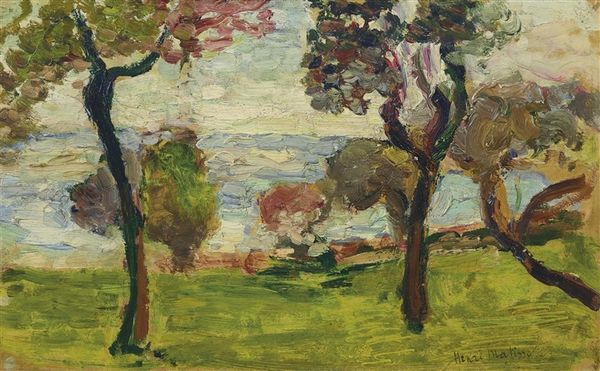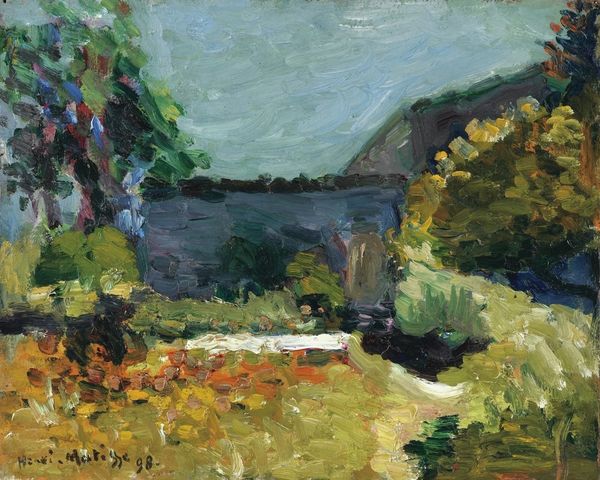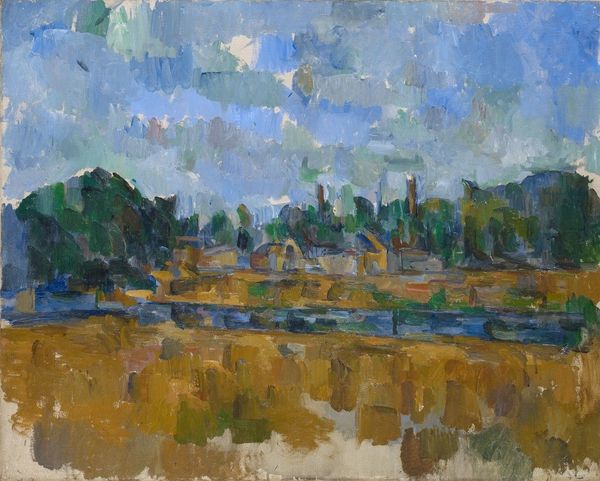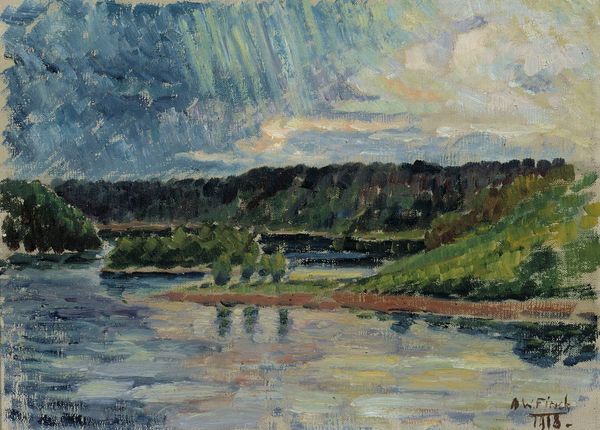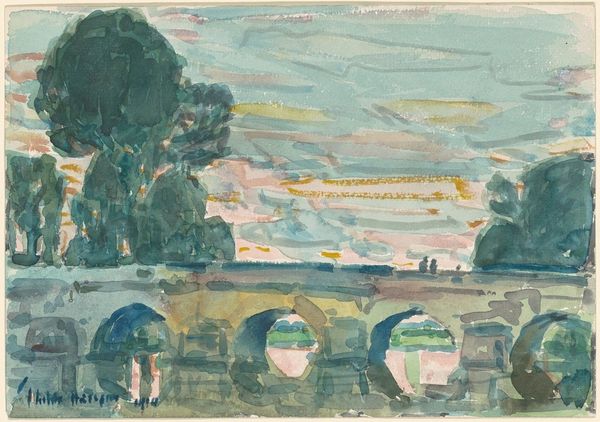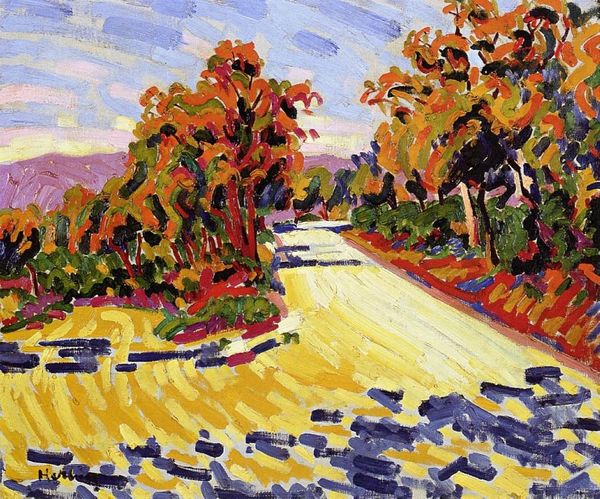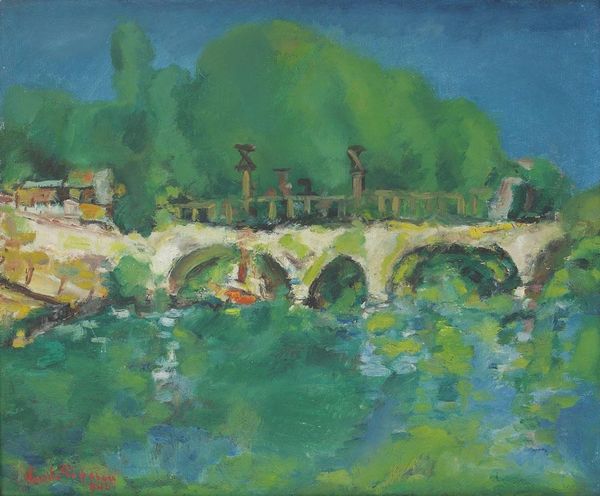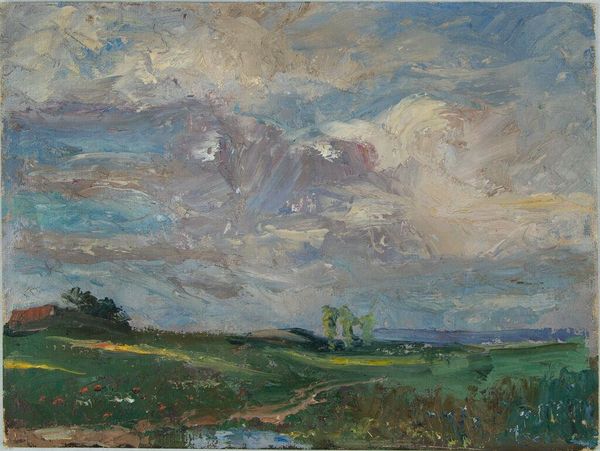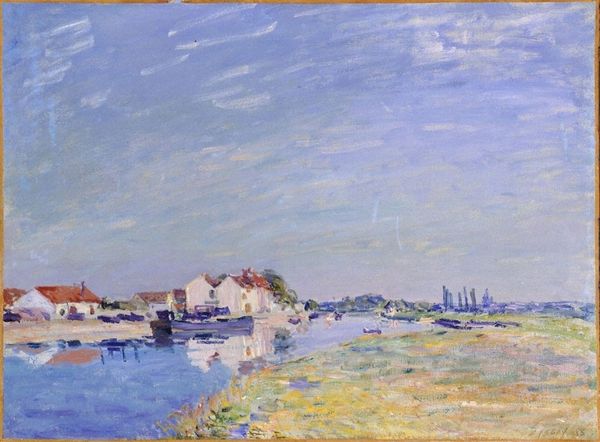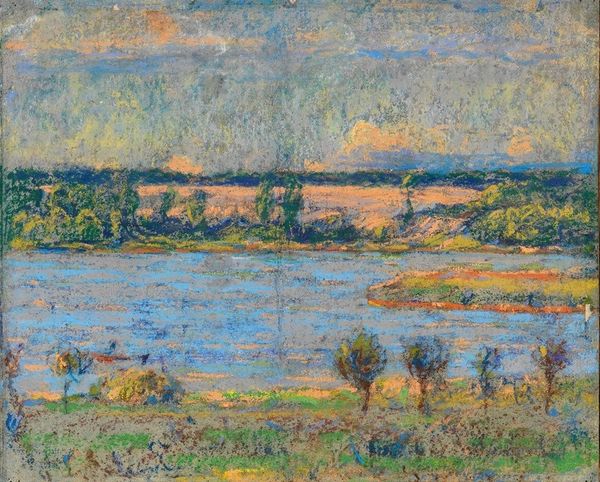
Copyright: Public Domain: Artvee
Curator: Here we have Wassily Kandinsky's "Munich – The Isar," created in 1901 using oil paint. It depicts a cityscape bathed in the soft light of what seems like either early morning or late afternoon. Editor: The first thing that strikes me is how raw the materiality feels. You can practically feel the impasto – the thick, deliberate strokes. It lends the piece a really visceral immediacy. Curator: Indeed, the expressiveness in the paint application is crucial here. Consider how he renders the water. Not through meticulous detail, but with broad strokes of color suggesting movement and reflection. The visible brushwork itself becomes part of the language, a semiotic device hinting at deeper feeling. Editor: Absolutely. And those vibrant colors! They weren't just pulled from thin air. Artists at the time, especially working en plein air like Kandinsky may have been, were experimenting with synthetic pigments becoming readily available due to industrialization. It fundamentally altered how an artist could record the visual world with these new tools available for painting. Curator: An insightful point! And it allows us to reflect on the broader context, doesn't it? Kandinsky was teetering on the edge of abstraction during this period. Look at how the bridge's function becomes secondary. Its formal presence, the arches, lines and colours, are what truly arrest the eye, a clear move towards emphasising form over representational accuracy. Editor: Yes, but it's important to consider also, the making of the image itself. Was this rapid recording possible only because he uses this readily purchased prepared paint instead of grinding and mixing himself, for example. The way he's building the scene with pigment feels direct. One can imagine how these oil paints have impacted landscape paintings around the world. Curator: Ultimately, "Munich – The Isar" serves as more than just a picture of a city. Editor: It really does become a record of Kandinsky's artistic evolution... Curator: Precisely. A telling point on the move towards pure expression. Editor: A record that also suggests how the shifts in materials change the mode and speed of art making too!
Comments
No comments
Be the first to comment and join the conversation on the ultimate creative platform.

